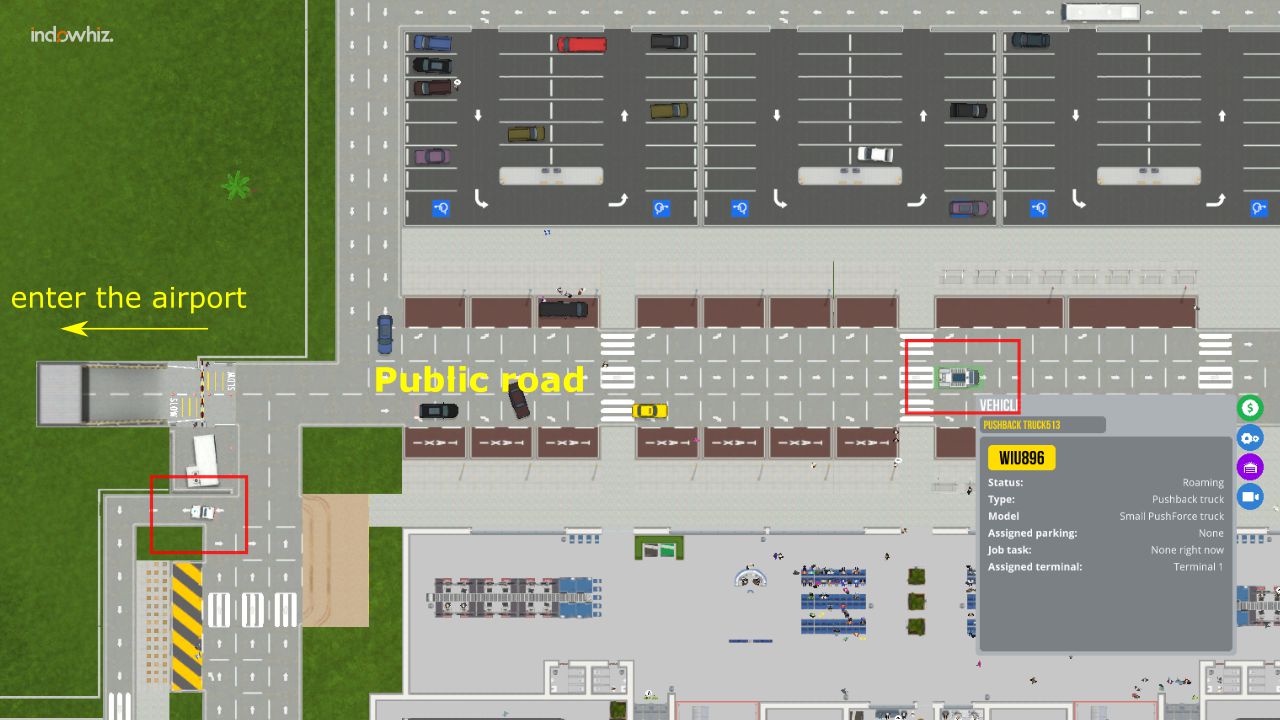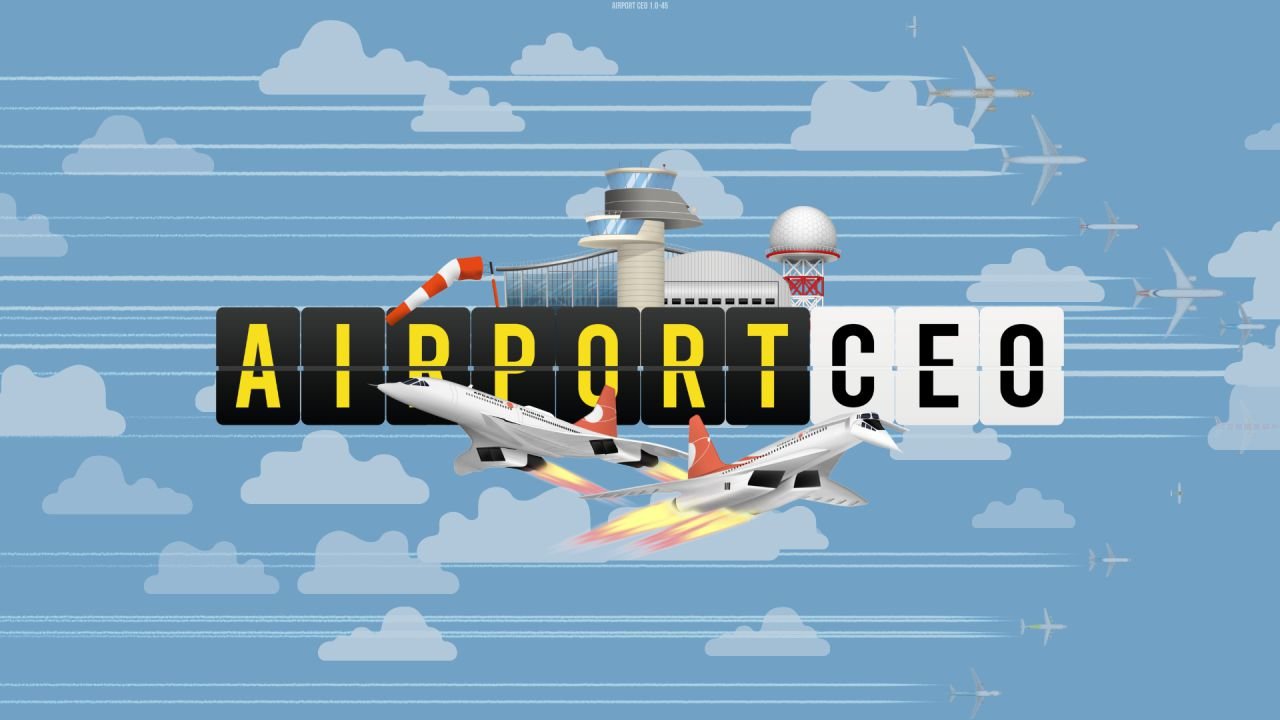Are you an aviation lover? Do you want to manage your own airport and watch your beloved plane takeoff and landing? Airport CEO offers an airport building and management game with a more realistic gameplay. Design your airport, hire staff, and buy service cars. Then sign a contract with many airlines and watch your airport work.
This review is NOT sponsored by the Apog Labs.
Summary
Price: Approximately $24.99
Genre: Simulation, Transportation, Management
Total File Size: ~ 4-8 GB
Platform: PC game (Windows/macOS/Linux).
Download:
» Steam, Reviews: 84% Positive.
Pros:
+ Complex managerial aspects but enjoyable
+ More detailed and realistic game mechanics
Cons:
– Steep learning curve
– Using inefficient algorithm (and slower on larger airport)
– Imperfect user experience
– Program frequently crash (and too many bugs)
Gameplay
Airport CEO is a game of designing and managing your airport from a top-down perspective (also called bird’s-eye, overhead, or helicopter view). Even though it’s not as realistic as other AAA games, the Airport CEO graphic is still laudable. It also offers day and night cycle.

In the game, you can design the most effective runways, taxiways, and terminals as you want. Later, you also deal with the business perspective of the airport. For example, hiring staff, deciding airline contracts, and managing budget and resources. In addition, you will face challenges, such as baggage security breach, traffic congestion, delayed flights, or emergency landings.
Pros
Complex managerial aspects but enjoyable
There are many things you need to manage, like managing staff, service vehicles, budget, and resources. When playing Airport CEO for the first time, the tutorial is helpful to create basic airport and familiarize yourself with the user interface. You may unconsciously play for hours with fun even with basic airports. There is a possibility that you may spend 100+ hours to play a single airport.

Meanwhile, the bigger your airport, the greater the challenges. One of them, you may face traffic congestion inside your airport, which may delay your flights. Still, since there are many dynamic things to manage, you will usually learn new things the longer you play.
More detailed and realistic game mechanics
Airport CEO is calculating the dynamic nature of each object. For example, each passenger has their own desire. They might want to go directly to gate waiting for their flight; or to lounge, bathroom, or shop before finally going to the gate. That dynamics also apply to your staff.
While some of the mechanic might not be 100% realistic, the Airport CEO still gives good nuance. For example, talking about baggage scanner, the automatic TIER I and TIER II scanners always correctly identify the non-threat baggage. If a baggage passes the TIER I and TIER II scanners, it will guarantee 100% a non-threat baggage. Although in the real world, no automatic scanner is going to be 100% correct. This means, IRL, some of either potential threats or non-threats baggage will be incorrectly identified.
Cons
Steep learning curve
Airport CEO is not for everyone. Unless you are familiar with airport management, you may hit problems while playing it.
For example, after you built a few medium-size stands, you may not know how to accept international flights with medium planes. There is no clue in the tutorial or help.
Airport CEO offers tutorials and help manuals, which you can read. But it may not cover all your needs. In the end, you may end up searching the web about it, and there is a lot of learning involved.
Inefficient algorithm
The developer may use the simplest path and queue algorithm to reduce computation needed. However, it will cause inefficiency of people, road vehicle and plane movements. For example, the taxiway traffic may be mess. A plane may need to pass a junction, but needlessly wait for another plane further away.

Other than that, because Airport CEO calculates the dynamic properties of each object, the more passengers there are in your airport, the slower FPS you get. Ultimately, there is a limit to the number of passengers for your computer. For example, a generic computer may hold about 2000-3000 passengers. More than that, Airport CEO might be unplayable (very slow) on your computer.
To solve this problem, you can reduce the Passenger per flight ratio in gameplay setting. For example, a Boeing 737 may hold 200 real passengers. Then, by using 50% ratio, that Boeing 737 only hold 100 passengers. By default, Airport CEO set a 50% ratio, and you can reduce it maybe to 10% or less. However, this would sacrifice the game’s “realism” in favor of increasing computer perfawormance.
Imperfect user experience
- The Airport CEO is built for a
1920x1080 pxor higher resolution.
Although it can be played on a laptop with a lower resolution (e.g., 1366x768px or lower), you may not be able to read some of the details (e.g., passenger passports). - Invisible unzoned area below jetways or doors.
You can often see any passenger who cannot get in or leave the plane. Usually, it is because there is no secure or international zone at the jetway’s entrance. However, rezoning may solve the problem. - Access cut-off may ruin your airport.
This is the most annoying bug in this game. Suppose catering trucks cannot access the catering depot, because the road has been cut off. As a result, this type of truck will circle your airport. Then, it will delay your plane indefinitely, waiting for the catering. Finally, it will affect all your vehicles and ruin your airport system unless you know that (hidden) problem.

Program frequently crash
The more passengers at your airport, the more resource-intensive this game becomes. A laptop with 8GB RAM may start smoothly in the early game but worsen the larger the airport. Then, the Airport CEO may frequently crash and ruin your mood.
Even with a powerful PC (higher than recommended system requirements) and 64GB RAM, the game often crashed for unknown reasons or bugs. Especially if you have a big airport.
Auto-save every 5 minutes can help you restore the game. Still, when it performs auto-save, you may experience short lag.

One way to minimize crash frequency is to reduce the graphics quality to the lowest. Although there is no guarantee it will prevent future crashes, using the lowest quality helps reduce the crash frequency, a lot.
Suggestions
Tips
- Build a lot of GA in early game.
Unless you playsandbox mode(with unlimited money),general aviation (GA)provides a considerable profit for early development. Prioritize and build at least 25 of them before focusing oncommercial flight. Later, you can remove GA (if needed) when you already run some mid-sizedcommercial flights. - Use planning mode.
This is one of the Airport CEO’s best features. You can design your airport without spending money. After completing your design plan, you can graduallybuild planned objectgiven your budget and priority. - Near-perfect baggage scanners.
Based on the current game mechanic (Airport CEO v1.0-45), the figure below is one of the near-perfect baggage scanner arrangements. The potential threat baggage goes toTIER I,II, andIII, then destroyed incargo annihilator. If potential threat baggage is misidentified byTIER IIIscanner, it will be returned to theTIER Iscanner. Otherwise, the non-threat baggage will go toOUTPUT 1orOUTPUT 2, which you need to send to the same destination.

v1.0-45)- Assign trucks to a plane stand.
You can assign abaggage truckfor each commercial stand. Also, assignbelt loader truckandpushback truckfor each medium/large commercial stand. This way, you can have 1:1 ratio between service vehicles and plane stands and ensure faster ground service. - Use one–way road.
To better manage your traffic, use one way road (service and public roads) and taxiway as many as you can. - Independent departure and arrival runways.
With more planes, it is better to separate the departure and arrival runways. Usually, arrival takes longer than departure. In some cases, you may need to build 2 arrival and 1 departurerunwaysto catch up the traffic. - Baggage tilt tray is OP.
You may only need 1baggage scanner sets(completeTier ItoTier IIIscanners), but the scanned baggages can go to their respective destinations usingtilt traywith “to destination” mode.
For example, you have 2 baggage bays. You can send all baggage fromcheck-in desksto the same scanner set. Then, the scanned baggage goes totilt tray, and let it decide the shortest path to their destination. - CTRL and SHIFT keys.
- You can use
SHIFTto select multiple objects. For example, you can pressSHIFTkey and select multiplecheck-in desksandbaggage drops, then connect them to the samebaggage bay. Note that, you may not see feedback in selecting the objects and may miss some of them. - You can use
CTRLto add or subtract10numbers at a time. For example, when you need to deploy30constructors, you can press CTRL and only click+button 3 times.
- You can use
Prevents known bugs
Note: The suggestions below may be outdated if developers have fixed the respective bugs.
- Use only one vehicle checkpoint.
Multiplevehicle checkpointsmay cause bugs where someservice vehiclesleave topublic road. However, they will not return to your airport and go around the public road endlessly. Connecting vehicle checkpoints using public road doesn’t work either. The only option is to sell the vehicles and buy the same type ofservice vehicles.

- Avoid using remote stands (unless for emergency landings).
There are too many bugs usingremote stands, especially if it is a medium or large stand. Any bugs will cause infinite delay to any future schedules on the same stands.- First bug: The
service carmay leave theservice car stopswithout anyramp agents. It causes theservice roundof the respective stand to be0%until the plane is manuallydismissed. - Second bug: Some of
boarding passengersare left behind on theairside shuttle bus stops. This will stop theboarding progressuntil the plane is manuallydismissed. Even more, theairside shuttle buswill not pick up the remaining passengers. - However, you can use remote stands for emergency landings. A plane requesting an emergency schedule only needs to unload the passengers and their baggage. So, any known bugs above are less likely to occur.
- First bug: The

- Rezone your jetway.
The invisible “unzoned” tiles may prevent passengers from entering or exiting thejetway. Therefore, to ensure the passengers can enter the plane, rezone the entrance after upgrading the stand’sjetway. - Use lower graphic quality if necessary.
Powerful PC may not guarantee smoother play. A large number of passengers in your airport may decrease your PC performance. It reduces theFrame Per Seconds (FPS)performance and may cause frequent crashes. Therefore, it that happens, you may need to lower thegraphics quality. You can alsodisable weather effectsand turn off theVSyncandexterior object edge smoothing.



